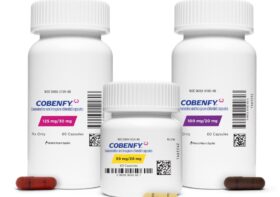Best Small Ski Resorts to Avoid the Crowds
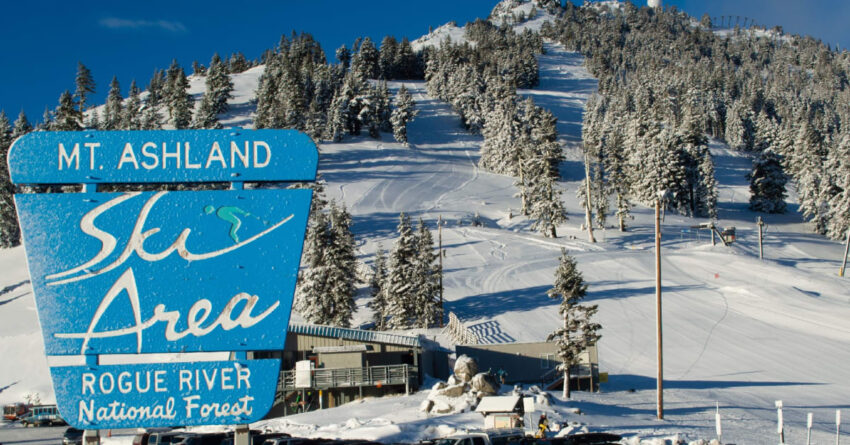
Ski resorts are becoming increasingly corporatized, crowded, and exorbitant, but let’s not harp on all that. The happier news is that there’s a cheaper, chill alternative to all those packed, pricey peaks lining Colorado’s I-70 alpine corridor and beyond. If an off-the-beaten-groomer ski experience is your jam this winter, these under-the-radar, “mom ‘n pop” ski spots are a sufficiently steep, deep, crowd-free bargain. They’re packing the same powder and good times as the biggies, but with more untracked turns, less lift lines, old-school vibes, and happening après ski scenes that remind us why we picked up this sport in the first place.
Related: This Is the Best Ski Gear We Tested for 2024
Here’s a roundup of the best smaller ski spots to hit this winter—all local alpine shrines that we’re betting you’ve never heard of. While most of the big-name resorts have jam-packed parking lots, long waits at the chair, and slopes as crowded as Central Park, there’s a simple, savvy solution to getting the best bang for your ski buck. Head to any of the following gems hiding in the hills from California and Colorado to New Hampshire and (yes) North Carolina—and ski like a smart local.
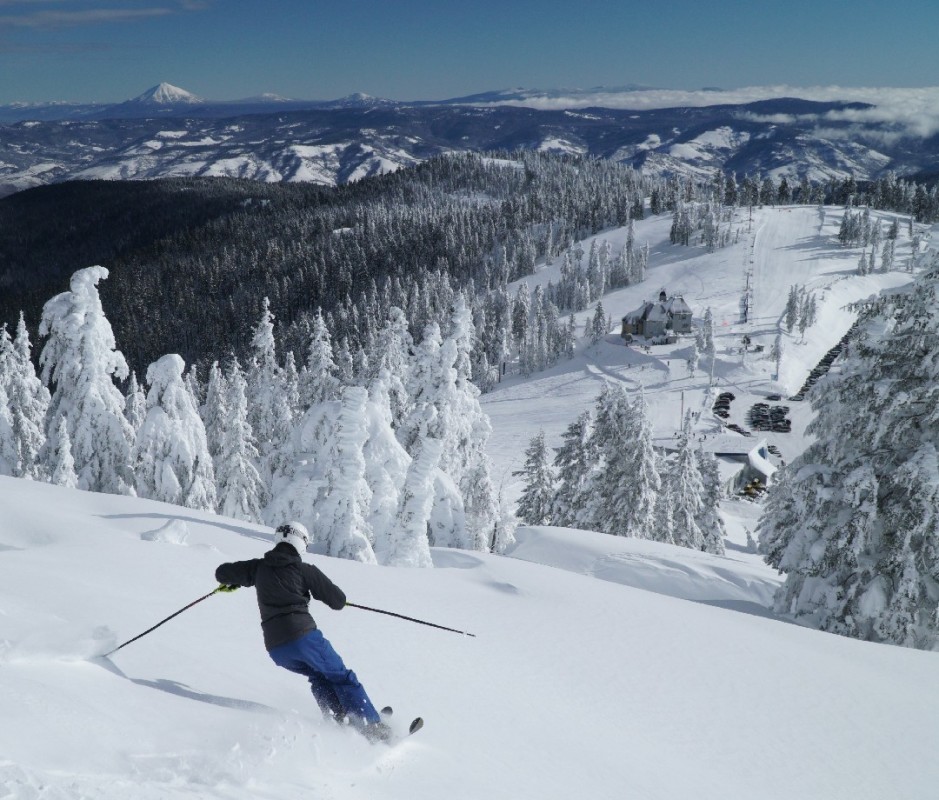 Mt. Ashland. Guaranteed great runs for $74 per day—or use your lift ticket next time.
Mt. Ashland. Guaranteed great runs for $74 per day—or use your lift ticket next time.
Courtesy of Mt. Ashland Ski Area
Best Long Weekend Find: Mt. Ashland Ski Area, Oregon
If you can’t make it to the Alps this year, try Mt. Ashland. On paper, the 240-acre resort might look small, but with a summit elevation of 7,533-feet, this is real mountain skiing. And, if you buy a lift ticket ($74 for the day, $26 for night skiing) and aren’t satisfied within the first 45 minutes of skiing, you can turn it in for a voucher for another day. There are five lifts, 44 runs, and 265 inches of snowfall per year. That’s plenty to keep all levels of skiers happy, but if you’re just learning how to ski, Mt. Ashland is ideal. The beginner area is separated from the rest of the terrain, so newbies can practice turns without any fear of being plowed into by faster skiers. The area is open Thursday through Monday from 9 a.m. to 4 p.m., plus extended “Twilight” skiing until 9 p.m. on select Thursday, Friday, and Saturdays between January and March (aka party-time for neighboring Southern Oregon University students). The town of Ashland (home to the world-renowned Oregon Shakespeare Festival) is just minutes away from the hill, with a picturesque downtown, well-priced lodging, and excellent restaurants.
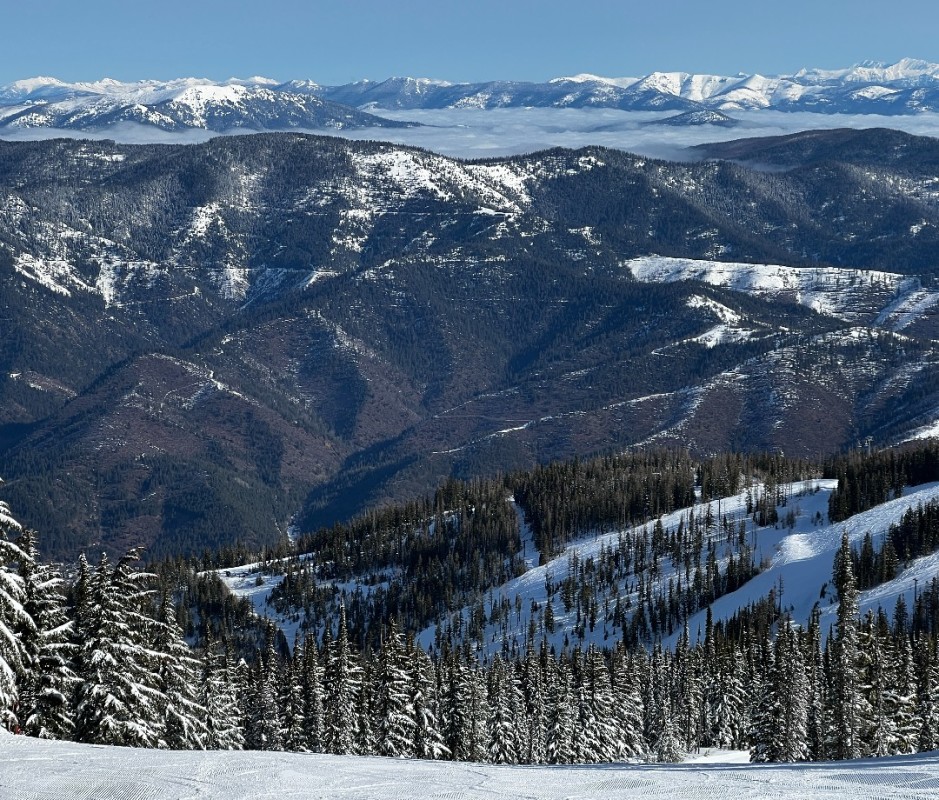 Silver Mountain Resort offers some of the best skiing, snowshoeing, tubing, and lift ticket prices in upper Idaho.
Silver Mountain Resort offers some of the best skiing, snowshoeing, tubing, and lift ticket prices in upper Idaho.
Courtesy Image
Best for Families: Silver Mountain Resort, Idaho
Home to North America’s longest gondola, this privately owned mountain confirms that Idaho Panhandle powder is the real deal. Based in Kellogg, ID, just 30 minutes from Coeur d’Alene and an hour from Spokane, WA, Silver Mountain Resort is a local magnet for skiers and snowboarders, as well as snowshoers and the family snow tubing set. Offering some of the finest runs in upper Idaho, the mountain is a relative bargain too, with lift tickets in the $66-$75 range, depending if its mid-week, weekend, or holiday. The Morning Star Lodge, at the base of the gondola, offers ski-in, ski-out lodging. Resort amenities include a Silver Rapids Indoor Waterpark for kids (and their parents) to enjoy after a day on the slopes.
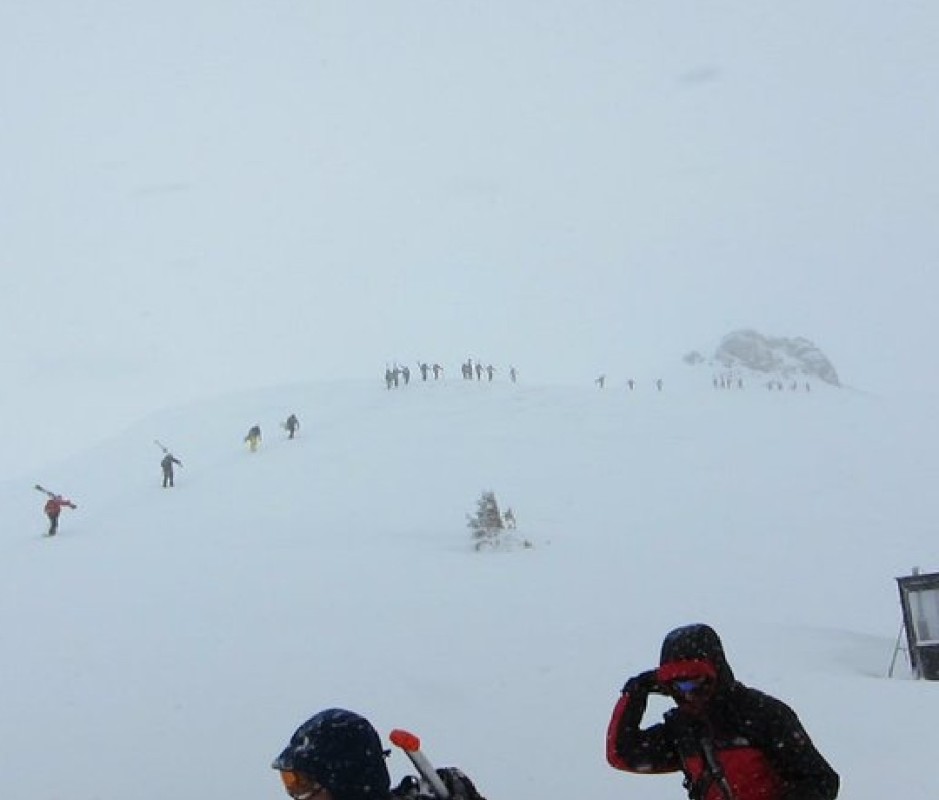 The lofty 13,487-foot summit of Silverton Mountain is North America’s highest ski area—and one of the steepest.
The lofty 13,487-foot summit of Silverton Mountain is North America’s highest ski area—and one of the steepest.
Courtesy Image
Best for Experts Only: Silverton Mountain, Colorado
It’s definitely experts only at steep ‘n deep Silverton Mountain in southwestern Colorado’s rugged and remote San Juan Mountains—as the ski area’s logo (a skier tumbling down a mountain) makes abundantly clear. Silverton has just one lift that reaches 13,487 feet, making it North America’s highest ski area. From here, skiers and snowboarders have unparalleled access to 26,819 acres of chutes, bowls, cliffs, natural glades, and no groomers. Blasted with over 400 inches of annual snowfall, it’s pure expert terrain—staffed with Silverton guides who can help showcase many hike-to options. You can buy an “unguided” lift ticket for $99, but we recommend starting with a guided lift ticket ($229-$269). You’ll ski with an accredited guide and up to seven other skiers. It’s the best way to experience the mountain, especially on your first visit. Those who want to venture even further out into the lofty wild can sign up for a helicopter drop ($184).
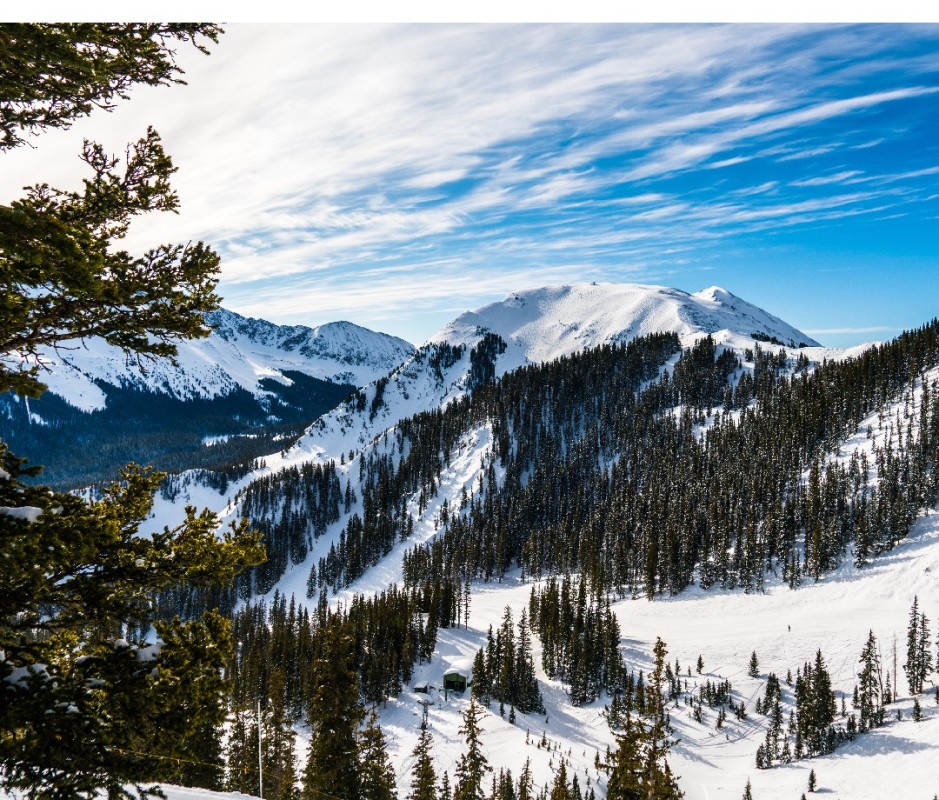 Kachina Peak at Taos Ski Valley. Huge ski hill without all the hoopla.
Kachina Peak at Taos Ski Valley. Huge ski hill without all the hoopla.
Courtesy Image
Best Major Mountain With Local Vibes: Taos, New Mexico
Located in New Mexico’s northern high desert adjacent to the Sangre de Cristo Mountains, Taos isn’t so much under the radar as it is off the main map—and well worth finding. The ski area receives over 300 inches of snow annually and more than 300 days of sunshine on nearly 1,300 acres of pristine slopes. Topping off at just over 12,400 feet, a summit to base run at Taos Ski Valley will get you over 3,000 feet of vertical—and be warned, about half of this mountain is expert terrain. While it’s a larger ski resort than others on this list with 13 lifts and vast terrain, Taos still manages to maintain a small-town vibe. Pro-tip: Buy tickets at least 72-hours early for the best prices, and check out the quaint Bavarian Restaurant alpine lodge at the base of Lift 4 for an old-country après ski experience.
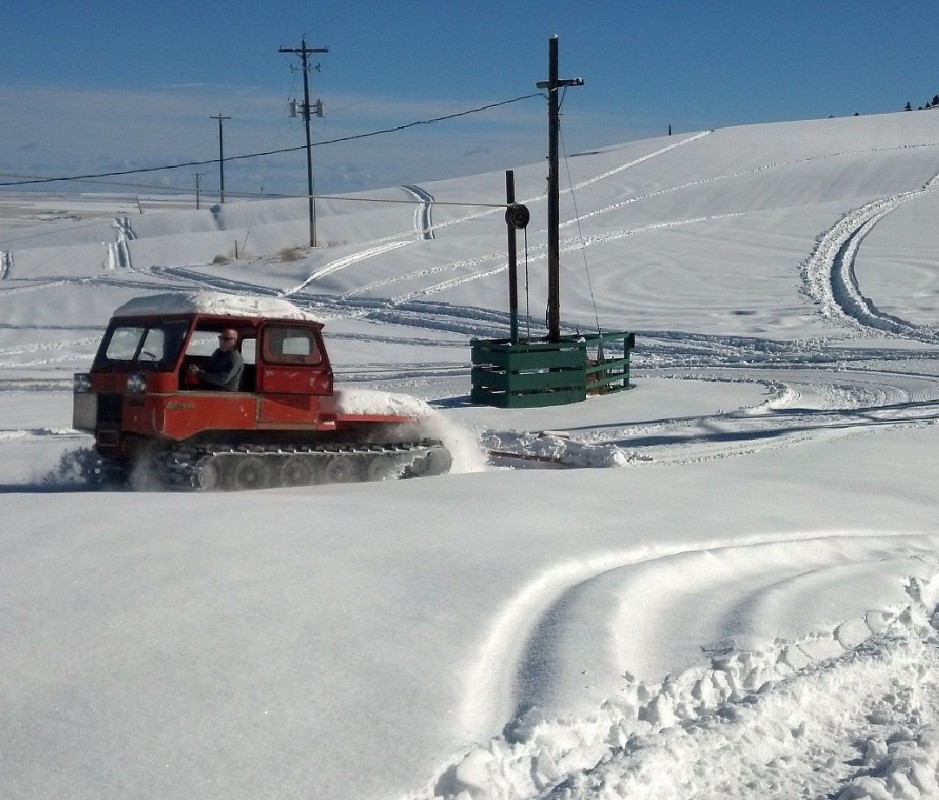 Badger Mountain: 10 bucks a day.
Badger Mountain: 10 bucks a day.
Courtesy image
Best Ski Deal, Period: Badger Mountain, Washington
Deep in central Washington on the Columbia River Plateau, Badger Mountain claims to have the lowest lift ticket price in North America—and at $10 for the whole day, who can dispute that? This tiny, volunteer-operated ski area near Richland, WA, is perfect for beginners, equipped with two rope tows and a T-bar that serve three main runs with extra room for exploration. The small lodge has a great community fire pit—plus there’s some very fun family sledding here too. For an extra seven bucks you get a great burger, chips, and soda for lunch.
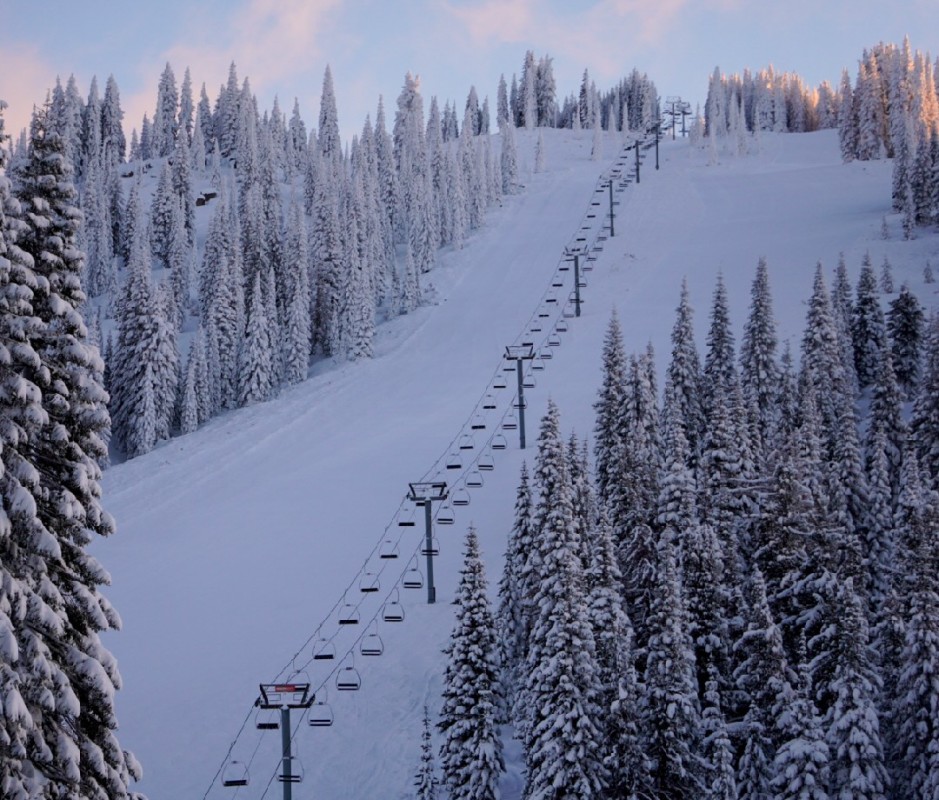 Mt. Shasta Ski Park. Not just for mountaineers.
Mt. Shasta Ski Park. Not just for mountaineers.
Courtesy Image
Best for Backcountry Newbies: Mt. Shasta Ski Park, California
Perched at 14,162 feet, Mt. Shasta is arguably one of the most striking mountains anywhere. It’s a favorite for novice mountaineers due to an abundance of non-technical routes and relative lack of crevasses. But the big secret here is that when the snow is good, there are few better places for an affordable ski vacation. Mt. Shasta Ski Park is a full-service resort that offers plenty of cruisers and powder runs served by four lifts with state-of-the-art snowmaking equipment when needed. The summit of the ski area is 6,890 feet and there’s 425 skiable acres (with an additional 360 acres of accessible backcountry skiing). The slopes (and three terrain parks) will keep everyone happy here—from beginners to skiers with the need for speed. Adult tickets are as low as $74; they can be bought in advance and transferred to an alternative day or person. Lodging options abound, from old-time mountain inns to modern hotels.
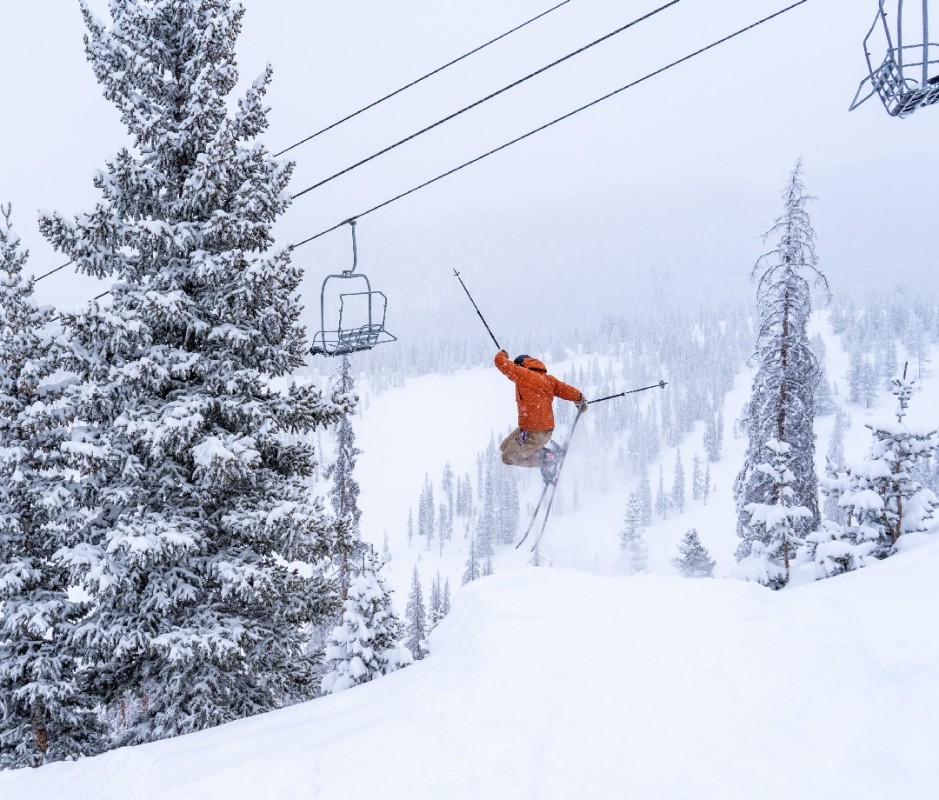 Monarch Mountain’s 10,790-foot base elevation is one of the highest in North America.
Monarch Mountain’s 10,790-foot base elevation is one of the highest in North America.
Courtesy Image
Best for Bowl Boot-Packers: Monarch Mountain, Colorado
Dress warm when you ski Monarch Mountain. Perched at 11,923 feet (the base is at 10,790), the snow is deep, the air is thin, and the area just out of Salida, CO, is legendary with amazing views to match. Monarch is a powder magnet with an average of 350 inches per year, served by seven lifts and 800 skiable acres. While there are some terrific green and blue runs, more than 30 percent of the ski experience is black diamond or double diamond—and for an extra challenge you can boot-pack into Mirkwood Basin for untracked bowl skiing. You’ll find a comfortable lodge, a welcoming pub called the Sidewinder Saloon, and an excellent ski school here without the crowds and attitude of so many of Colorado’s I-70 resorts. Lift tickets prices are “dynamic,” meaning they change according to the day of the week and holiday period. You can find one for as little as $74 midweek (plus a one-time $5 RFID fee), and buying multiple tickets at a time saves money. Expert skiers should consider ponying up for the snowcat option, especially if it’s a powder day. Cat Skiing is $575 per seat, or you can rent all 10 seats for $5,500. The price includes free equipment demos, avi gear rental, lunch, and an après ski beverage.
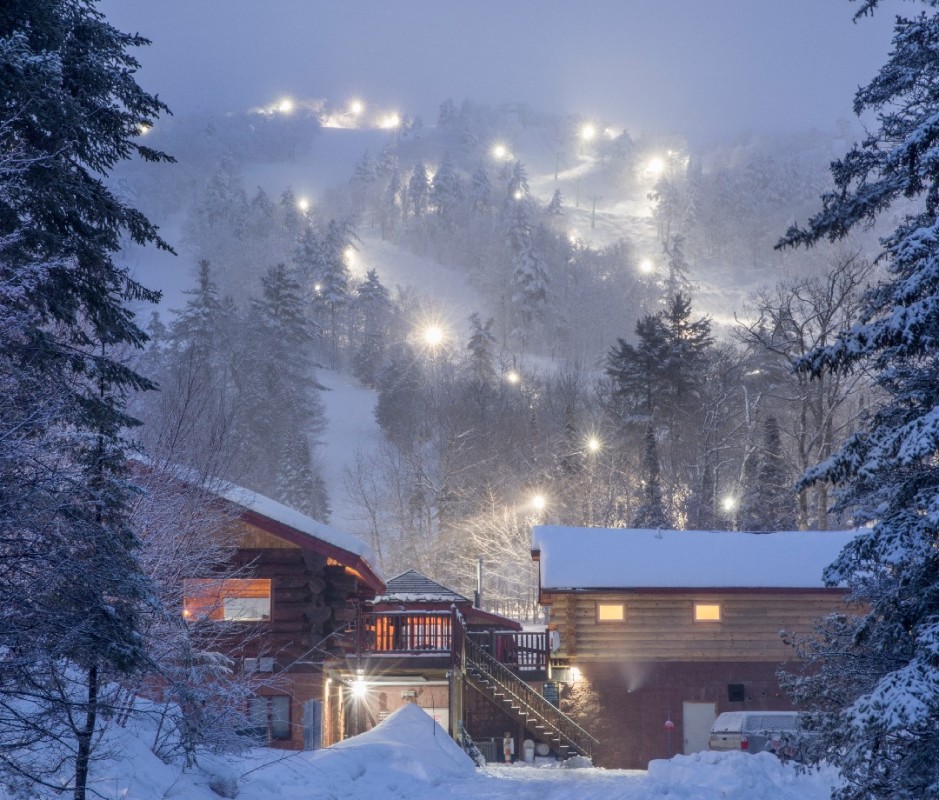 Nestled in Michigan’s Upper Peninsula, Mount Bohemia Ski Resort is a hidden nirvana for advanced skiers, offering some of the best lift-accessed backcountry skiing in the country.
Nestled in Michigan’s Upper Peninsula, Mount Bohemia Ski Resort is a hidden nirvana for advanced skiers, offering some of the best lift-accessed backcountry skiing in the country.
Courtesy Image
Best Plunge in the Midwest: Mount Bohemia Ski Resort, Michigan
This funky ski mountain in Michigan’s upper peninsula is recommended for advanced-intermediate and expert skiers. Mount Bohemia boasts the biggest vertical drop in the Midwest (900 feet), with plenty of tree, chute, and cliff skiing—and some of the best lift-accessed inbound backcountry skiing in North America. There are two lifts and a bus—yes, on some runs there’s bus drop-off and pick-up—and no grooming. Nearly 600 acres of skiable terrain receives 273 inches of annual snowfall—most of that champagne powder. There are yurts and cabins to rent, a snowcat ski operation on Voodoo Mountain, and the Nordic Spa with cold and hot plunges, Finnish Sauna, and Eucalyptus Steam Cabin. Day rates for skiing are $92, and skiing on Saturdays requires a season pass.
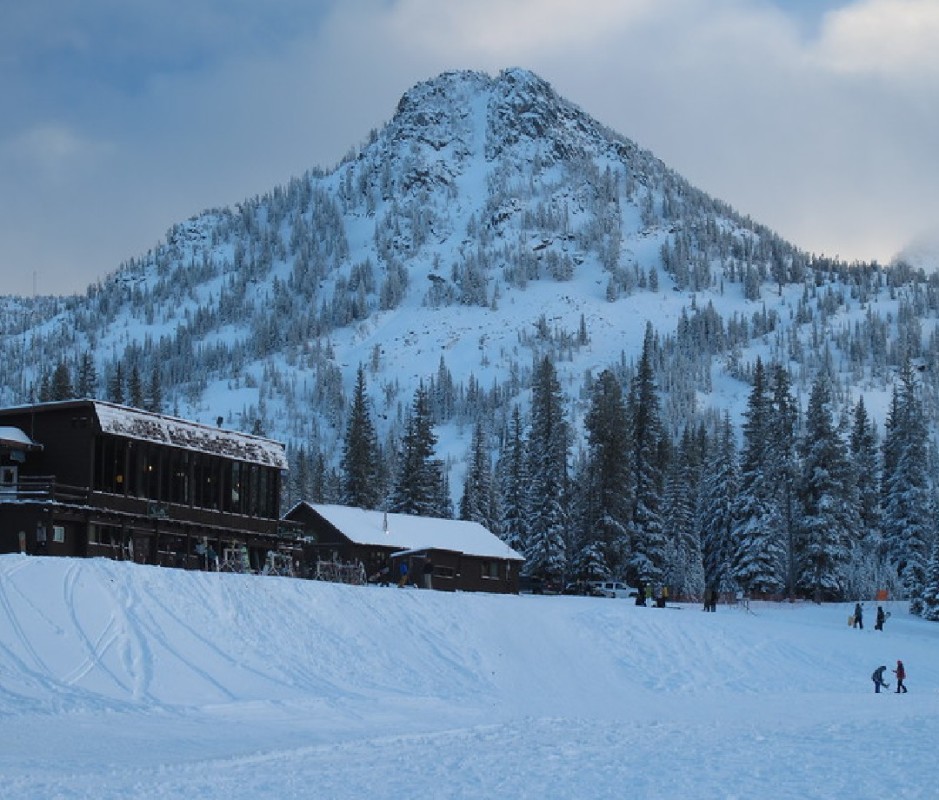 Anthony Lakes Mountain Resort. Powder ski the single chair and T-bar, or rent a snowcat for the day.
Anthony Lakes Mountain Resort. Powder ski the single chair and T-bar, or rent a snowcat for the day.
Justin Beach
Best Northwest Powder Cache: Anthony Lakes Mountain Resort, Oregon
This could be Oregon’s best-kept secret. Anthony Lakes Mountain Resort, located in eastern Oregon, is home to some of the best powder skiing in the Northwest. Surrounded by the craggy Elk Horn mountains with a summit pushing 8,000-feet, the ski area offers an action-packed 1,100 acres of skiing and snowboarding accessed by a single chair lift and T-bar tow. The vertical drop is 900 feet, which translates to a fun day whether you’re a beginner or expert. Lift tickets are $50 per day—and for $3,850, you and 11 of your friends can rent a snowcat (and driver) and spend the day exploring untracked powder. Stay in nearby Baker City or drive just under an hour to The Lodge at Hot Lake Springs to soak in one of the biggest hot springs in the Northwest and catch a movie. Ski Anthony Lakes is open Thursday through Sunday.
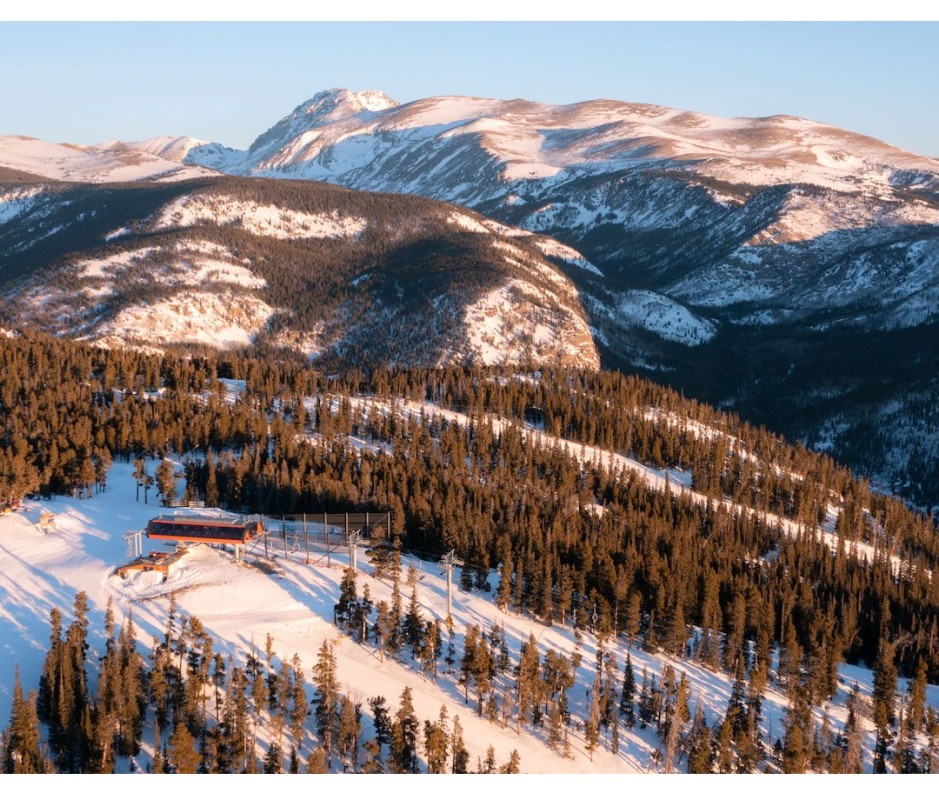 Eldora is just 21 miles from downtown Boulder—and 49 miles from Denver.
Eldora is just 21 miles from downtown Boulder—and 49 miles from Denver.
Courtesy Image
Best Ski Day 50 Miles From Denver: Eldora, Colorado
While crowds flock to Colorado’s colossal resorts like Vail and Aspen, Eldora is a breath of fresh air about 20 miles from Boulder. Since 1962, savvy skiers and snowboarders have been enjoying the ski area’s nearly 700 acres of varied terrain, topping out at a respectable 10,600 feet with a top-notch snowmaking system. Experts will find a series of double black diamond glades off of the Corona lift to be sufficiently awesome and challenging. Eldora is also open to alpine touring, cross-country skiing, and snowshoeing. Under 50 miles from Denver, here’s your easy answer for dodging longer lift lines and commutes.
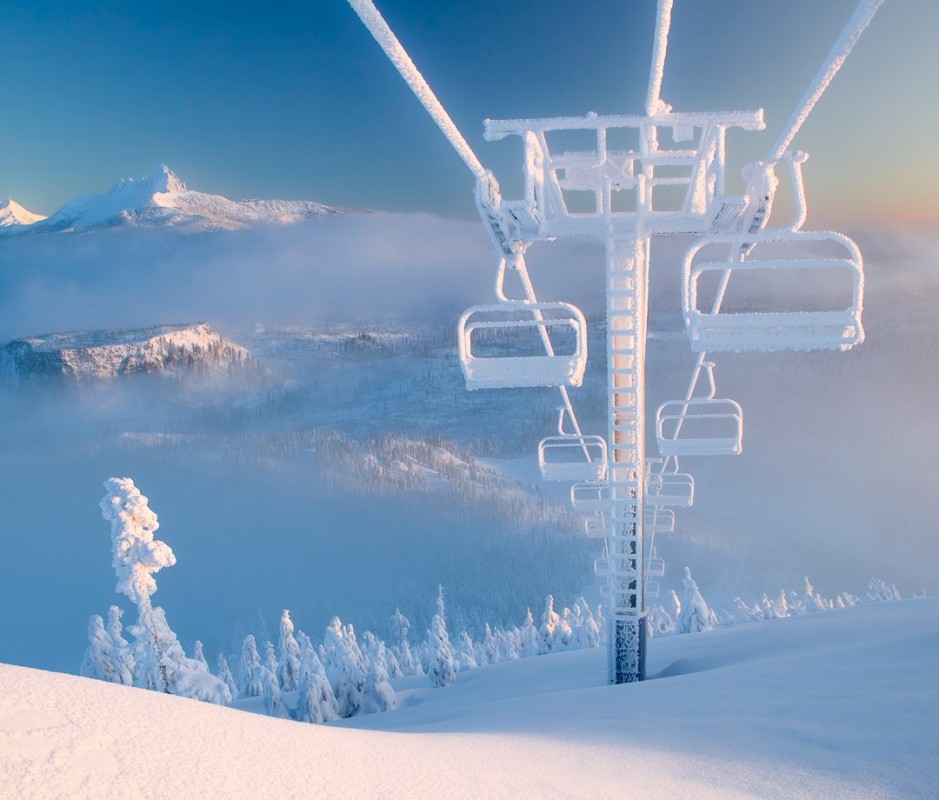 Hoodoo Ski Area
Hoodoo Ski Area
Pete Alport
Best Secret Slopes in the Cascades: Hoodoo Ski Area, Oregon
With many of Oregon’s larger ski areas rife with crowded parking lots and long lift lines, Hoodoo punches way above its weight class in the fun department. Tucked into the Oregon Cascades, Hoodoo’s old-school vibe is as genuine as it gets. Chances are you’ll know all the lift operators’ names by the end of the ski day. Situated on the top of Santiam Pass, between Bend and Salem, Hoodoo offers five lifts, 800 skiable acres, and just over a 1,000-foot vertical drop—with plenty of backcountry skiing nearby in the surrounding Deschutes National Forest. With an average of 450 inches of snow each season, you’re pretty much guaranteed good turns. Day passes are $69-$79 for adults, with night skiing (4-9 p.m.) $38-$49. You can join in on-the NASTAR ski races every Friday night. It’s a lot of fun, and entry is included with your lift ticket or season pass. The town of Sisters is less than a half-hour away and has first-class lodges and B&Bs, as well as fabulous local drinking holes like the Three Creeks Brewing Co.
More Best ‘Mom ‘n Pop’ Ski Spots We Love 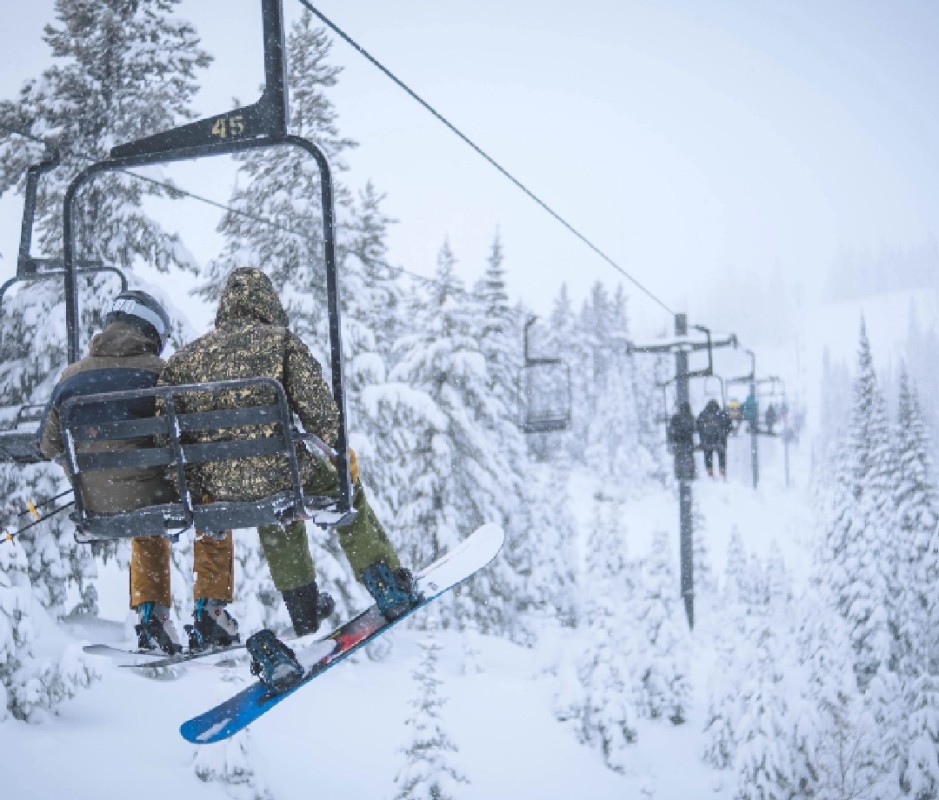 Lost Trail Ski Area. Just $63 for a day pass.
Lost Trail Ski Area. Just $63 for a day pass.
Courtesy Image
Lost Trail Ski Area, Montana
It’s no secret that Montana is a skier’s paradise. While mega-resorts like Big Sky are fun, Lost Trail, near the small town of Sula, remains one of the better kept secrets. Open Thursday through Sunday, the area offers five lifts and three rope tows that access 1,800 vertical feet and 60 trails of quality skiing and snowboarding for a variety of skier levels. A full day pass is only $63—a bargain considering how much snow this two-peak ski area receives (325 inches annually). Lost Trail’s late founder Bill Grasser’s aim was to keep the ski area a small, safe, family-oriented mountain—a legacy that carries on.
Mount Baldy, California
Perched in the San Gabriel Mountains, the close-yet-far slopes of Mount Baldy are the best alpine secret within an hour of sunny Los Angeles. After a good snowfall, this is SoCal skiing at its finest, with more than 800 acres of terrain that includes 2,100 vertical feet. The mountain has four lifts and offers a variety of terrain for all levels of skiers and snowboarders, from groomed runs to tree runs and open bowls. Big with families, the mountain has a Terrain Based Learning Center and Snow Tubing Park. Tickets can be found online for as low as $40 ($25 for half-day), so you can definitely get plenty of mogul mashing for your money here.
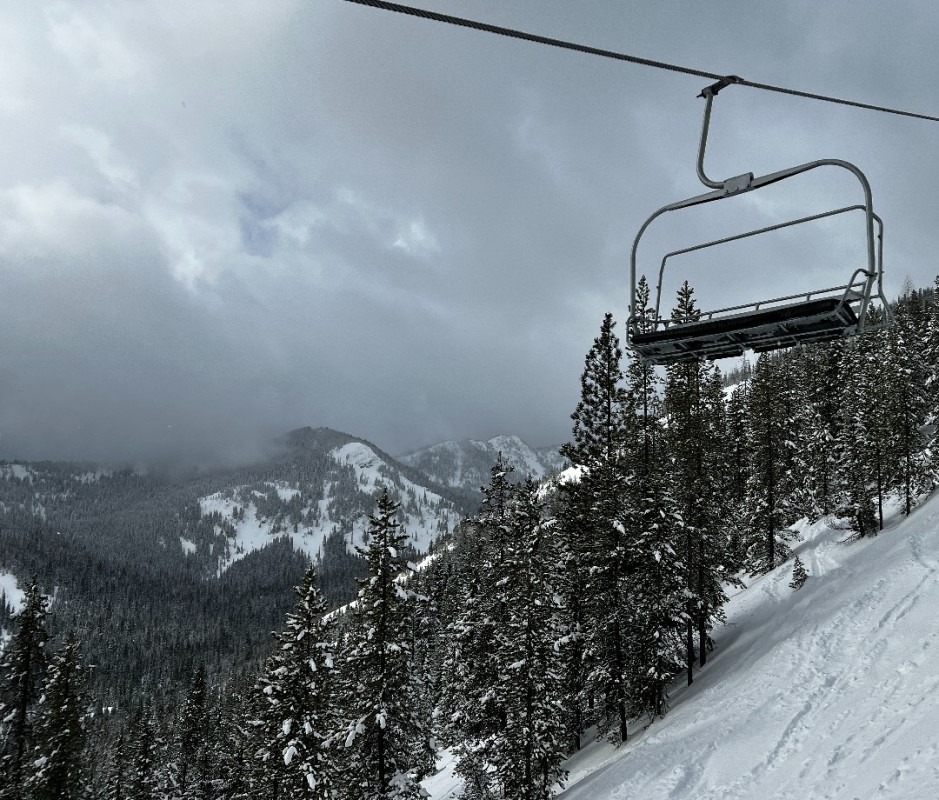 Lookout Pass
Lookout Pass
Courtesy Image
Lookout Pass, Idaho
Lookout Pass is a powder hound’s gem. Hiding way up in Northern Idaho, this small resort nearly doubled in size recently with a new chairlift servicing 500 acres of Eagle Peak terrain that offers a good mix of intermediate to expert runs. Tons of snow, virtually no lift lines, and (fun fact) a border crossing between Idaho and Montana that lets you ski across time zones, make this affordable, low-key spot a family favorite. Lift tickets range between $50 and $63, with seniors over 80 skiing free and “Bring a Friend Thursdays” offering two day passes for $75. Perched high (both altitude- and latitude-wise) in the northern Rocky Mountains at the crest of the Bitterroot Range, Lookout Pass is known for having some of the best snow in Idaho—and some of the most of it, too. The pass averages more than 400 inches of powder per year. Yep, that’s over 33 feet.
Mad River Glen, Vermont
Mad River Glen, supported by the Stark Mountain Foundation, is a community ski area that dates back to 1948. The Foundation not only supports the wildlife and eco system of Stark Mountain, but also sponsors the Friday afternoon Skiing for Scholars Program at the ski area. In 1995, the Mad River Co-op formed to protect the classic Mad River Glen skiing experience by preserving low skier density—placing a cap on the number of skiers allowed on the mountain. The area’s natural terrain and forests, the varied trail character, and friendly community atmosphere all play a part in making this one of the most cherished ski spots in New England (for skiers only, as this is one of the few ski areas left in the country with a no-snowboarding policy). Offering 700 skiable acres, four lifts, 200-plus inches of annual snowfall a year, and a 2,037-vertical drop, Mad River Glen has some challenging terrain as well as plenty of runs for less adrenaline-fueled enthusiasts. Stark’s Pub is the local après ski hangout, with lots of ski memorabilia and an excellent selection of Vermont microbrews.
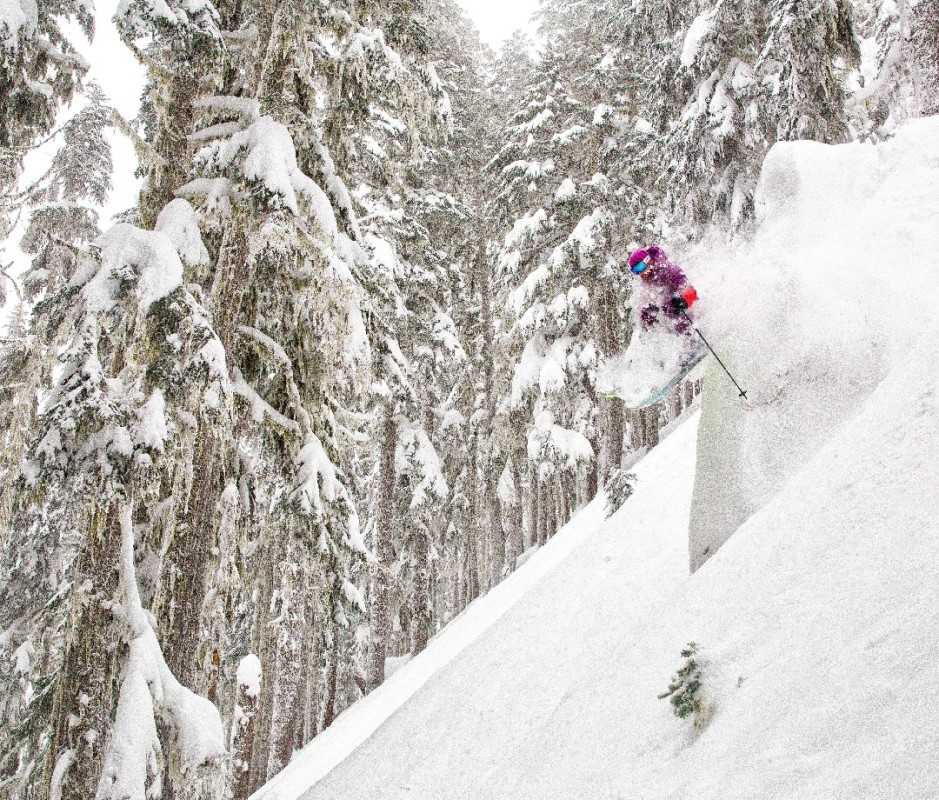 White Pass Ski Area
White Pass Ski Area
Andy Mahre
White Pass Ski Area, Washington
There’s a reason this area is called White Pass. Deep in the heart of Gifford Pinchot National Park, just a dozen miles from Mt. Rainier National Park, White Pass boasts more than 350 inches of snow a year. Views of Mt. Rainier and the surrounding Washington Cascades are every bit as spectacular as the lack of lift lines. There are 1,400 acres of skiable terrain, but the area seems much bigger, probably due to the whopping 2,000 vertical feet from summit to base. There is enough steep terrain to keep experts happy, and many a mellow long run (one of them is 2.5 miles long) winding through forests and glades. The mid-mountain lodge, called High Camp, is a prime spot for an afternoon beer and burger. Stay at the White Pass Village Inn for a terrific ski in/out experience. Lift tickets are $85 a day for adults ($75 for repeat guests), with budget friendly multi-day options. The night skiing scene is particularly vibrant; get a ticket for $30.
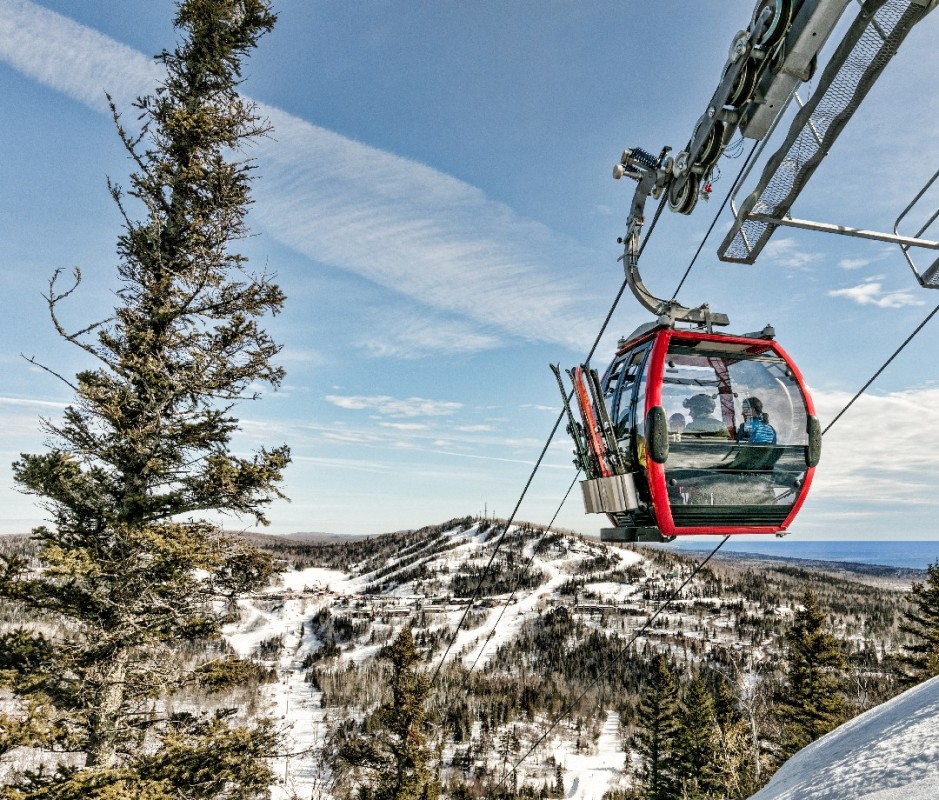 Lutsen Mountains. Seven lifts spread over four peaks and a remote Northern Minnesota location (that’s Lake Superior in the background) keep the crowds at bay.
Lutsen Mountains. Seven lifts spread over four peaks and a remote Northern Minnesota location (that’s Lake Superior in the background) keep the crowds at bay.
Lutsen Mountains
Lutsen Mountains, Minnesota
Lutsen Mountains, near Lutsen, MN, has some remarkably good skiing. First, there’s reliable snow (both natural and man-made). Second, you can count on it not being crowded as the resort enforces a daily skier capacity limit—so buy your tickets early, especially on holidays and weekends. The resort combines four peaks via seven lifts (including a gondola) and 60-plus trails. The vertical is just under 900 vertical feet, and there’s plenty of terrain for skiers of all abilities and ages. Lutsen has been family-owned and operated for 75 years—first by founder George Nelson, a member of the famed 10th Mountain Division, who started the ski area in his home town when he returned from WWII. The Skinner family bought the resort in 1980, and three generations later, continues to improve and expand the operation. It’s an ideal destination whether you’re based in the Midwest or want to head there for a new ski experience.
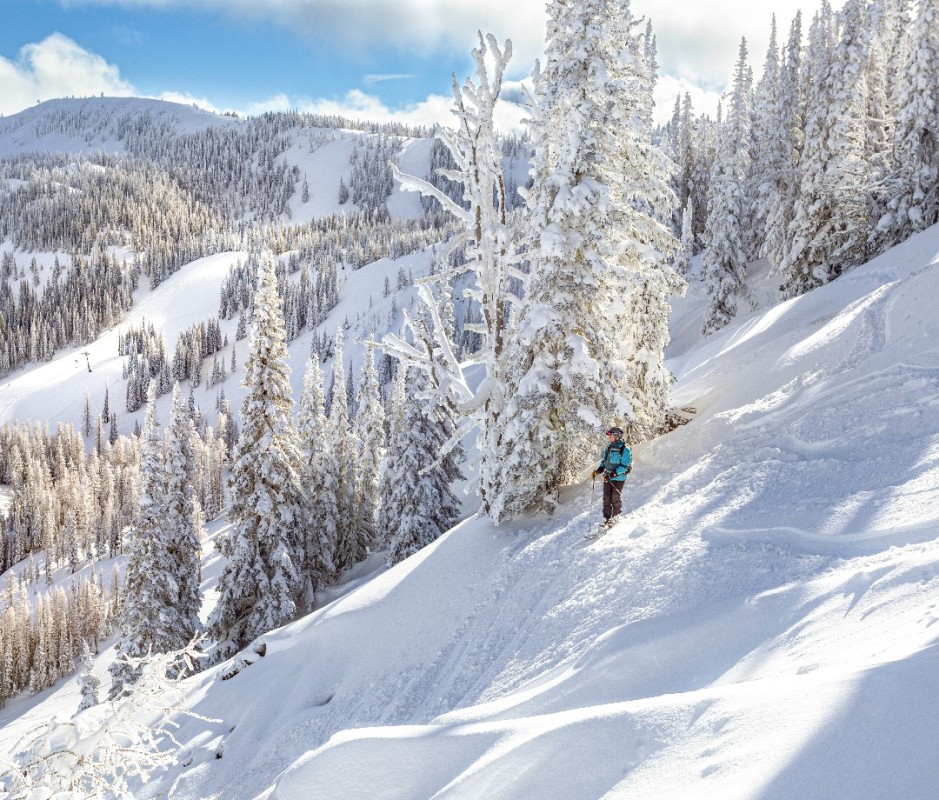 Mission Ridge Ski & Board Resort
Mission Ridge Ski & Board Resort
Jared Eygabroad
Mission Ridge Ski & Board Resort, Washington
Nestled on the east side of the Washington Cascades, just 13 miles from Wenatchee, WA, Mission Ridge is one of the true hidden gems in the Pacific Northwest. The ski area is old-school, with wood-hewn lodges, great groomers, steep chutes, and zero lift lines. There’s plenty of terrain spread over 2,000 skiable acres and 2,250 feet of vertical. Consider Mission Ridge a world-class ski area that the rest of the world hasn’t discovered. The area boasts light, dry powder that falls fast and furious, followed by spectacular bluebird days. There’s a free ski bus from Wenatchee that makes seven daily round trips. Lift tickets are $99 for adults, $79 for teens aged 13-17, and a friendly $9 for the under-7 crowd. Don’t miss the excellent night skiing, which expanded to the top of the ridge this year.
Snowy Range Ski Area, Wyoming
While Wyoming may not be at the top of your list for skiing, don’t overlook the Snowy Range Ski Area—a small, family-friendly ski and recreation area tucked into Medicine Bow National Forest just west of Laramie. Averaging around 250 inches of snow each year and stretching upward to 9,633 feet, the hill’s three crowd-free lifts offer plenty of beginner and intermediate terrain with some decent expert options as well. Tickets are $64 for adults on the weekend and free for kids under 4 years old.
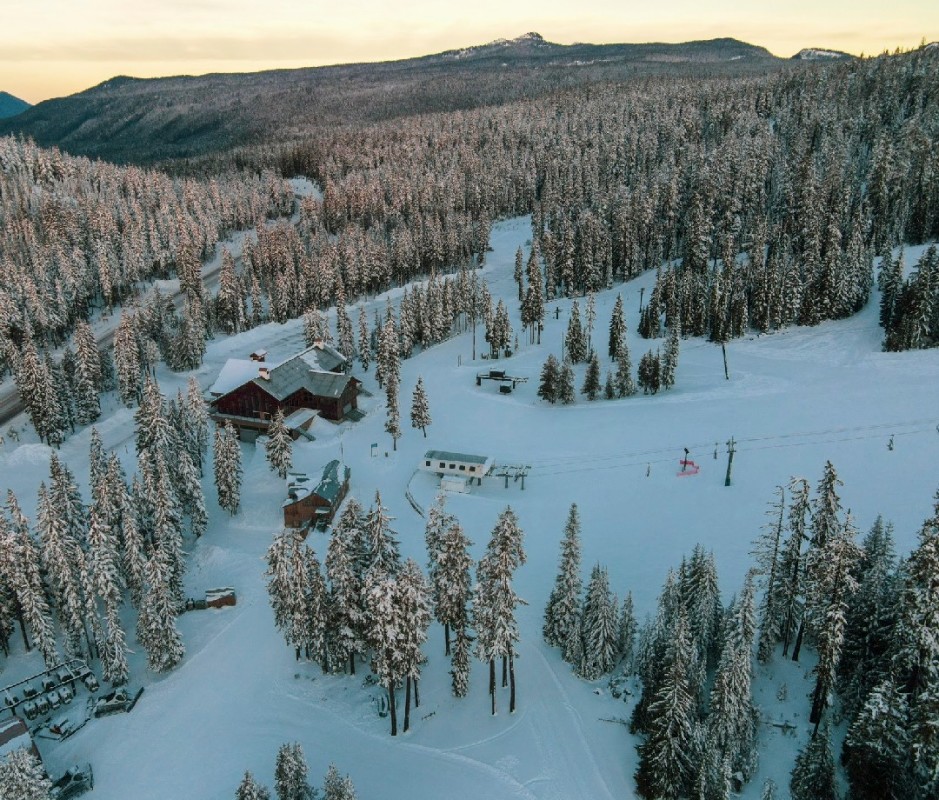 Willamette Pass Resort is home to Oregon’s steepest run.
Willamette Pass Resort is home to Oregon’s steepest run.
Cody Leish
Willamette Pass Resort, Oregon
Like so many mom ‘n pop ski areas in the Pacific Northwest, Willamette Pass has plenty to offer. A favorite day trip for University of Oregon students, the resort’s four ski lifts include Oregon’s biggest and fastest chair—a high-speed six pack that converts to a gondola for summer tours—and one surface lift that access 555 acres of fun. Willamette Pass also boasts the steepest ski run in Oregon: RTS—leaning at a 52-degree angle. There’s 1,563 vertical feet of skiing with 34 percent of the slopes rated advanced, 45 percent intermediate and 21 percent beginner. The Kaleidoscope-Perseverance Run takes you from the summit of Eagle Peak through more than two miles of trails back to the lodge. Lift tickets can start at as low as $19 (paid in advance online) and change based on daily demand.
Bogus Basin, Idaho
There’s nothing bogus about this ski..
